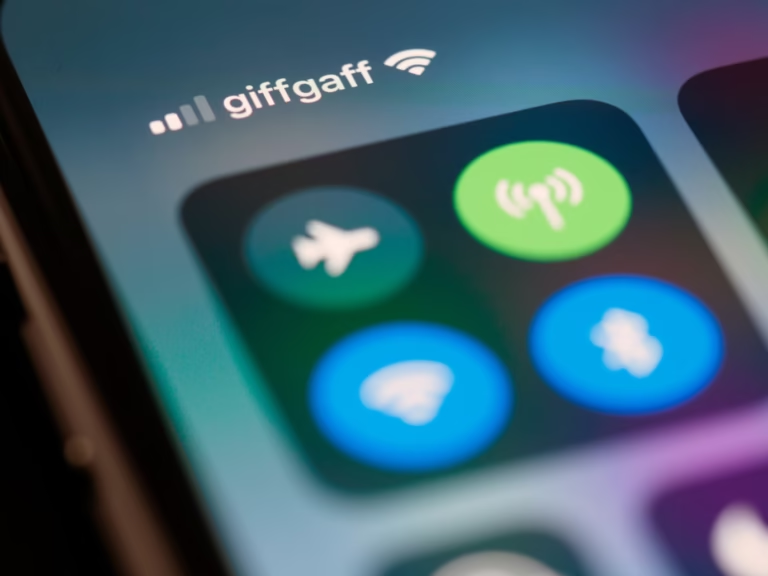We’ve all heard the buzz around 5G, but what exactly is it, and why does it matter? 5G stands for “fifth generation” in mobile network technology. It’s more than just a faster internet connection—it’s a revolutionary shift that’s changing how we live, work, and connect with the world.
This article explains what 5G is, how it works, and how it will impact your daily life, whether you’re browsing social media, running a business, or driving a smart car.
What is 5G
5G is the latest generation of wireless technology, following 4G (LTE). It’s designed to offer:
- Faster speeds
- Lower latency (less lag)
- More device connections
- Greater efficiency and reliability
Where 4G allowed us to stream videos and browse on the go, 5G unlocks a new world of possibilities, from smart cities to autonomous cars and virtual reality.
How Fast is 5G?
5G speeds can vary depending on the location and the type of 5G network. In ideal conditions, 5G can reach speeds of 1 to 10 Gbps (gigabits per second)—that’s up to 100 times faster than 4G.
To put it in perspective:
- Downloading a full HD movie (1.5 GB) takes:
- 4G: Around 5–10 minutes
- 5G: Around 10–30 seconds
How Does 5G Work?
5G uses radio frequencies, like 4G, but operates on higher frequencies (called millimeter waves) that carry more data. There are three main types of 5G:
- Low-band 5G: Wide coverage, similar to 4G but with slightly better speeds.
- Mid-band 5G: Balanced speed and coverage, ideal for cities and suburbs.
- High-band (mmWave) 5G: Extremely fast, but limited range—mainly in urban areas.
5G also uses small cell towers, placed closer together, which help maintain a strong and fast signal.
Benefits of 5G
1. Faster Internet Speeds
5G allows lightning-fast downloads, smoother streaming, and instant browsing. You can stream 4K or 8K video without buffering.
2. Lower Latency
Latency is the delay between a command and the response. 5G reduces it to as low as 1 millisecond—great for gaming, video calls, and real-time applications.
3. Better Connectivity in Crowded Areas
5G supports more devices per square kilometer. That means less network congestion in crowded places like stadiums, concerts, or city centers.
4. Supports Smart Technology
5G can handle millions of connected devices—smart homes, smart traffic lights, and wearable devices can all operate more efficiently.
5. Enables New Technologies
- Autonomous vehicles need real-time data to drive safely.
- Remote surgeries and healthcare can become more precise.
- Augmented and virtual reality (AR/VR) becomes seamless and immersive.
How Will 5G Affect You Personally?
For Everyday Users:
- Faster downloads and uploads
- Higher-quality video streaming
- Smoother mobile gaming
- Improved video calls
- More responsive smart home devices
For Businesses:
- Enhanced productivity through cloud-based tools
- Real-time communication and automation
- Improved customer experiences
- New opportunities in tech, logistics, healthcare, and manufacturing
For Students and Remote Workers:
- Better access to online classes and meetings
- Fewer interruptions or connection drops
- Improved collaboration tools
Is 5G Available Everywhere?
Not yet. 5G is still being rolled out in many parts of the world. Major cities in the U.S., Europe, and Asia already have 5G, but rural areas may take longer to get full coverage.
Most new smartphones support 5G, including the latest models from Apple, Samsung, OnePlus, and Google.
Are There Any Downsides to 5G?
1. Limited Coverage (So Far)
High-speed 5G (mmWave) doesn’t travel far and is blocked by walls, trees, or rain. That’s why multiple small antennas are needed.
2. Battery Drain
Early 5G phones may use more power. However, newer models are improving battery optimization.
3. Cost
5G phones and plans may be more expensive, but prices are coming down as adoption increases.
4. Privacy and Security Concerns
More connected devices also mean more potential entry points for hackers. Strong cybersecurity and regulation will be important.
Common Myths About 5G
- Myth: 5G causes health problems
Fact: 5G radiation is non-ionizing, just like 4G and Wi-Fi. According to the World Health Organization, there is no evidence that 5G poses health risks. - Myth: 5G will replace Wi-Fi
Fact: 5G complements Wi-Fi but won’t fully replace it, especially for indoor networks.
What Do You Need to Use 5G?
- A 5G-enabled phone or device
- A mobile plan with 5G access
- Living in an area with 5G network coverage
You don’t need to switch to 5G immediately, but as the network expands, it will gradually become the new standard.
Conclusion
5G is not just another upgrade—it’s a leap toward a more connected and efficient future. Whether you’re a student, a professional, or just a casual phone user, 5G will soon impact how you communicate, work, learn, and play.
While full benefits may take a few more years to reach everywhere, the foundation is being laid today. As 5G becomes more widespread, expect faster connections, smarter devices, and a more seamless digital experience.

